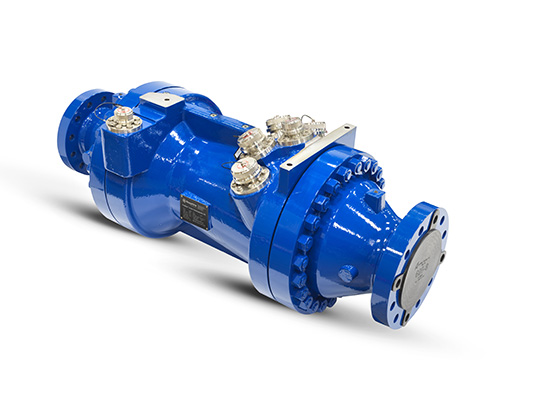Energy recovery systems can help reduce wasted energy in hard-to-abate sectors and meet ever-growing electricity demand.
By Steve Richards, Vice President of Engineering, Sapphire Technologies
Demand for electricity is projected to accelerate over the next three years driven by electrification of transportation, residential sectors and burgeoning data centers (IEA). At the same time, countries with advanced economies have made substantial emissions reductions pledges to curtail the direst effects of climate change. Business leaders increasingly include ESG goals side-by-side with traditional shareholder metrics. Yet, sometimes investment in ESG initiatives is perceived as counter to maximizing profits. However, one overlooked aspect of cleaner energy consumption is that, across sectors, we waste a lot of energy. Recovering wasted energy presents an immediate opportunity to reduce emissions while enabling business leaders to achieve savings on energy costs, reconciling the goals of profitability and ESG.
In the industrial sector, over 50% of energy inputs are wasted.1 McKinsey estimates at least 3,100 thermal terawatt-hours (TWhth) of waste heat is currently not captured globally – equivalent to roughly $152 billion. Heat recovery systems have become more advanced and cheaper – able to turn waste heat into high temperature inputs for existing industrial processes or turn heat into electricity through heat-to-power technologies. The reduced cost of technology, combined with the higher savings potential due to the rising cost of electricity, changes the game when it comes to these energy efficiency systems. For example, McKinsey estimates that a cement plant with 1Mt capacity could save up to $3.3M (USD) per year by implementing waste heat recovery systems.
In the energy sector, opportunities abound to recover energy lost throughout the supply chain. There are hundreds of thousands of pressure letdown stations throughout the natural gas supply chain globally where energy is wasted. Turboexpander-generators have emerged as a reliable and emission-free method for generating clean electricity from pressure letdown processes. Conventional turboexpanders are cost-prohibitive. However, companies like Sapphire Technologies have adapted this technology in game-changing ways. By utilizing advanced active magnetic bearings, a high-speed permanent magnet generator with efficient, high-frequency power electronics, and a patented through-flow architecture, Sapphire Technologies transformed the turboexpander into a compact, economically attractive product suitable for in-line installation. Each system generates up to 2.6 GWh of clean energy each year and offsets 2,000 tons of CO2e from the atmosphere. Installed throughout the global natural gas supply chain, these energy recovery systems have the potential to generate enough energy to meet more than 20% of the US’s total power consumption in 2023. At a levelized cost of energy (LCOE) of $45/MWh they are cost-competitive with other clean energy sources like solar ($50/MWh), onshore wind ($30/MWh), and offshore wind ($120/MWh).2

One type of energy recovery that is a familiar concept is hydropower. The famous Hoover Dam serves the annual electrical needs of nearly 8 million people in Arizona, southern California, and southern Nevada. However, there are also micro applications of hydropower across industrial, water, wastewater, and agriculture sectors. A study by REDAWN, a project under the European Regional Development Fund, found that between 0.54 and 1.01 million tons CO2 could be saved each year from small hydropower technologies.3
Energy recovery systems are even in many homes. Since 2005, over half of homes built in the US have used energy/heat recovery ventilators to improve the efficiency of HVAC systems.4 One manufacturer of energy recovery ventilators reports that a 400,000-squarefoot casino saved $418,920/year in operating expenses by installing their energy recovery wheel.
While there have been technological advancements in energy recovery systems in recent decades, interestingly, much of the technology in this space is not new. Why then are energy recovery systems often overlooked as an energy security and emissions reduction strategy? This could be due to the perceived complexity of the equipment or a belief that the returns on investment may be limited. It can be difficult to justify allocating resources towards improving a system that is already functioning compared to investing in new revenue streams.
Nevertheless, government incentives, such as a 26% investment tax credit which took effect in 20215, may change this. Under the Inflation Reduction Act (IRA), specific deductions apply to energy efficient commercial building property (EECBP) or energy efficient commercial building retrofit property (EEBRP).6 More generalized production tax credits may also apply to specific implementations of energy recovery systems under the IRA.
Although energy recovery will not fully meet our energy needs, it would be prudent to reconsider a fundamental principle of sustainability we were all taught as children before investing in expensive and difficult-to-scale energy sources. This principle is encapsulated by the three R’s – reduce, reuse, recycle. It is now time to incorporate a fourth “R” – recover – into our guiding principles of economic and environmental sustainability.

Steve is the Vice President of Engineering at Sapphire Technologies. He has extensive international experience leading technology and product development programs as well as building and maturing world leading engineering teams. Steve joined Sapphire Technologies in December of 2022, heading up all aspects of engineering and technology & product development.
Before joining Sapphire Technologies, he was the President of Rolls-Royce High Temperature Composites Inc where he led the activity to develop a lightweight, high temperature material system and industrialize the manufacturing process. During his career with Rolls-Royce spanning nearly 4 decades he held a number of senior engineering and product roles including Chief Engineer, Product Director and VP of Engineering. He started his career in the United Kingdom before spending time in Canada, Ohio (USA), Norway and California (USA).
1 https://decarbconnect.com/waste-pressure-is-everywhere-in-the-energy-system-how-can-we-convert-it-to-clean-energy/.
2 IEA, “World Energy Outlook 2023”. https://iea.blob.core.windows.net/assets/42b23c45-78bc-4482-b0f9-eb826ae2da3d/WorldEnergyOutlook2023.pdf
3 https://www.mdpi.com/2673-4931/21/1/27
4 https://www.ncbi.nlm.nih.gov/pmc/articles/PMC8776175/
5 https://www.irs.gov/credits-deductions/energy-efficient-commercial-buildings-deduction
Scott Ellyson, CEO of East West Manufacturing, brings decades of global manufacturing and supply chain leadership to the conversation. In this episode, he shares practical insights on scaling operations, navigating complexity, and building resilient manufacturing networks in an increasingly connected world.